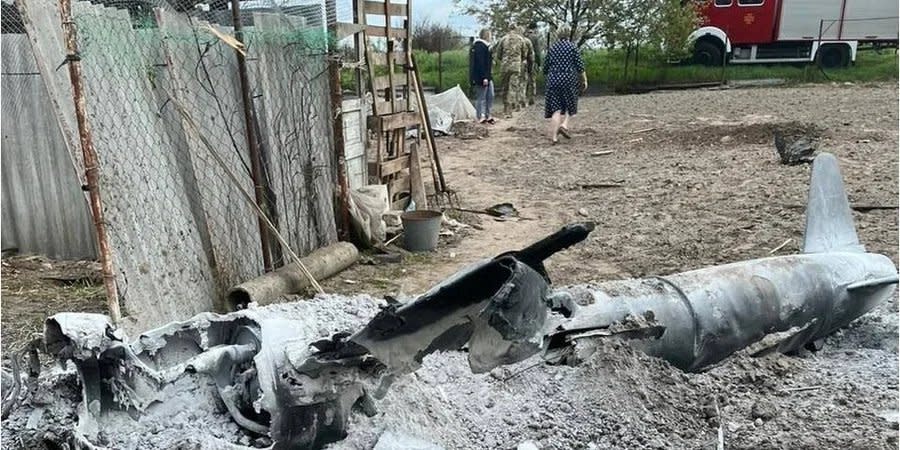Ukrainian expert Romanenko on Russian cruise missiles threatening Kyiv

Kh-101, Kh-555, and Kh-55 cruise missiles were part of Russia's arsenal in its attacks on Kyiv on the morning of Jan. 23.
Journalist Anton Pshenychnyi recently delved into the specifics of these missiles and how to neutralize them in an NV Video report.
The Kh-55, Kh-555, and Kh-101 missiles are well-known to Ukrainians. Every day, Russia using these weapons to intimidate and kill Ukrainians and to maximize economic abd infrastructure damage.
What threats do these missiles pose? What features do they have? And how can Ukraine mitigate the danger posed by this lethal arsenal?
NV interviewed aviation expert and leading scientist at the National Aviation University, ValeriyRomanenko, to get answers to such questions.
Russia sometimes uses the Kh-55 as a decoy to deplete Ukrainian air defense systems. The first successful interception of the Kh-55 occurred on Nov. 17, 2022, near Kyiv, with debris later discovered in Lviv and Ivano-Frankivsk oblasts.
Read also: One dead, 14 injured, widespread damage after Russia targets Kyiv in another mass missile attack
The first generation of Kh-55s, developed in the late 1970s, was labeled "high-precision," said Romanenko.
“The [Russian aerospace company] Raduga Design Bureau was responsible for Russian-guided missiles,” said the expert.
“By the early 1980s, the Kh-55 was ready for use, featuring a range of up to 2,500 kilometers, the speed of a fighter jet, and a payload exceeding 400 kilograms. These missiles were loaded onto bombers in sets of six, using a revolver-like installation.”
“Even during the 80s the [Kh-55] followed a complex trajectory at low altitudes, making it highly dangerous. The missile could fly at low altitudes to avoid detection by air defense systems, following the terrain, and had the capability to perform vertical and, to some extent, horizontal maneuvers.”
“Ukraine also had Kh-55 missiles in its arsenal after independence,” Romanenko said.
“We gave 575 of such weapons to Russia in 1999 as payment for gas, only to be used against Ukraine now.”
Read also: 3 dead and 42 injured — incl. 4 kids — in Russia’s horrific missile attack on Kharkiv’s civilians
Subsequent modifications of the missile focused on increasing its range.
“It could be launched up to 3,500 kilometers away,” he noted.
“The Russians later introduced a significant modification, the Kh-555, which saw large-scale use in 2022 during widespread attacks on critical and energy infrastructure in Ukraine. This is a purely Russian development; it began in the 2000s and was generally adopted in 2010.”
The Kh-101 is a “descendant” of the Kh-55 and Kh-555. It has become Russia’s primary cruise missle, while the older Kh-55 and Kh-555 are sometimes used as decoys.
The Kh-101 has a range of 5,500 kilometers and incorporates stealth technology to reduce its radar cross-section, making it much harder to detect.
“The Kh-101 is significantly more advanced,” says Romanenko.
Read also: Casualties and counting after Russian missile attack on Kyiv, one fatality confirmed
“Prior to launch, while still on the ground, its onboard computer is loaded with route maps and targets. While flying, the missile takes a snapshot of the terrain below and, in its computer control system, compares whether it matches or not, making it independent of satellite navigation. If the system is disabled or obstacles are encountered, the missile disregards it.”
Romanenko dismisses the notion that these technologies are of purely Russian origin, stating that the onboard computer contains 70-75% American-manufactured elements including microchipsand processors.
The best way to counter these missiles is to intercept them, which Ukrainian air defense has proven adept at.
A second, broader, approach involves pressuring Ukraine’s allies “to rigorously control the enforcement of sanctions” in order to cut off the supply of necessary components.
Romanenko also suggests keeping in mind the Russian city of Rybinsk, where all types of engines for Russian cruise missiles are produced. Understanding the range of Ukrainian-produceweaponry that could reach Rybinsk will essential for strategic planning.
We’re bringing the voice of Ukraine to the world. Support us with a one-time donation, or become a Patron!
Read the original article on The New Voice of Ukraine

